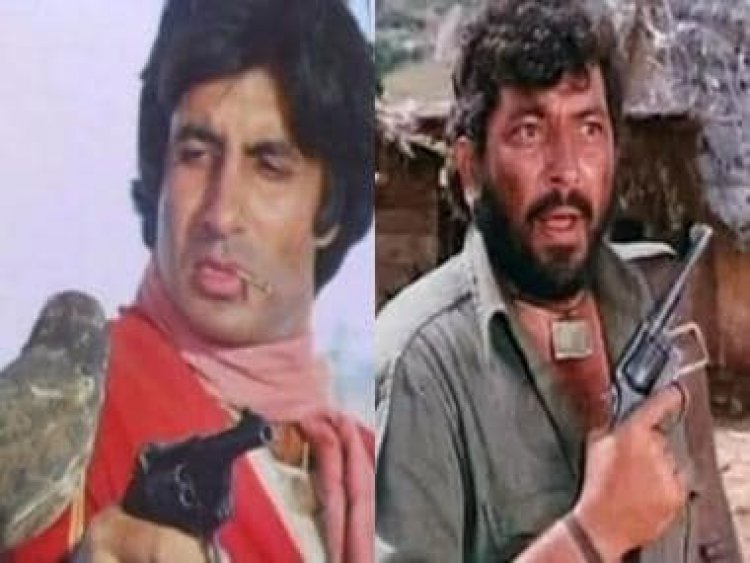Retake | Pride and Prejudice via the Entry
Retake | Pride and Prejudice via the Entry

Heroes and iconic characters have entered the world of our cinema unsubtly, but the waning power of stardust can perhaps be exemplified by them unsuspectedly emerging from our midst of late.
In a scene from Coolie (1983), an elitist man misbehaves with a coolie at the railway station. Provoked, he takes out a gun which is unanticipatedly snatched by an Eagle. This eagle then flies to deposit said gun into the hands of Iqbal, played by Amitabh Bachchan. Iqbal walks atop a train, biddi in hand, eagle on arm and the confiscated revolver in his possession before arriving at the scene of crime. It’s an iconic scene, shot from the ground up, and it portrays Iqbal as a working-class messiah. He momentarily walks the ramp, as if to invite objectification, before he descends to participate in the squabble below. In no other cinema are character entries treated with the kind of chemical endearment for the image over the word, like ours. Our cinema has never quite championed brevity and wit the way it has devoted itself to suggesting, through brazen imagery, the length and breadth of a character.
There could be a whole list of iconic entry scenes from Hindi cinema. Some are bizarre, some subtle, while others are presumptuously over-the-top. Naturally, the ones that memory has retained are the ones that either do the improbable or subversively, lead you on with a sense of anticipation. Gabbar (Amjad Khan) in Sholay for example is one of those rare examples where a sense of dread is patiently chiselled into the structure of the film. Before he even says “Kitne Aadmi They” Gabbar has manifested in our imagination as many despicable beings.
Then there are entries that simply accomplish the carefree bravado that youth must mandatorily comply with. Ajay Devgn’s famous split in Phool aur Kaante is a diabolical feat of machoism. It exists not because it follows logic, but because it defies any. In Dharmendra’s Jaani Dost, the hero is introduced through his thumbs and feet. He first makes a few gestures before planting his foot on the man chasing down a woman. Another act of bravado teased with the nonchalance of someone whose face and personality follows his morality. The latter is the hero of the story, the former the vehicle.
The way our heroes enter the world of the film has often set the foundation for the rest of his personilty to borrow from. In Zanjeer, contrary to the many iconic Bachchan entries, the actor wakes up from a nightmare, his trauma preceding the proportion of his life we are about to witness. Bachchan would soon become too big for industry, the kind of cinema giant it became impossible to hide behind abrupt entries, let alone subtle, uncelebrated exits. The entry is also a device that cues in a certain specified emotion. Bachchan’s roles as the angry, frightful young man were well suited for the kind of walking stroll that tested both patience and nerve but in films where characters must echo a certain, joie de vivre, the impetus has always been on chaotic, frivolous pace. In Anand, for example, Rajesh Khanna barges into the office of his doctor, talking over Bachchan, like a man running out of time.
In Farah Khan’s Main Hoon Na, Shahrukh Khan quite literally breaks the glass ceiling to prevent a fatal attack on his father. In K3G, he of course made that incredibly ludicrous jog from a helicopter to a giant mansion, as if prophetically egged by his mother to respond to her prayers. In both films, Khan’s entry functions as a god-like intervention, a stately response to both whimsy and prayer. In one he is the man who is needed, in the other he is the one being vaguely wished for. Either way, he is the answer to our prayers, a man deified before he even attempts to earn our patronage.
As our cinema has gotten older and you could argue, wiser, our cinematic language has evolved to subsume characters into the world of the film rather than present them as monoliths dragged in from other lives. In Rangeela, for example, Aamir Khan appears from the side of the frame, dressed like a thug, a wisecrack, but at heart still a rookie at life. It’s the kind of entry that enables intrigue, suggesting tendencies and a robust exterior that hides much more beneath the skin of a character we see for the first time. Even though Zoya Akhtar’s introduction of Murad from Gully Boy was hailed for being subversive, it’s really Ram Gopal Varma who imported the dutiful method of beckoning characters without telling the whole town about it. It has in effect added nuance to the entry scene, if somewhat de-sensationalised it.
Owing to a socio-cultural shift over the last decade, the Hindi cinema hero has lost the ability to be sensually shake or awe the way he used to until a couple of decades ago. There is now greater impetus on bedding in compared to avowedly stand outside the maxims of a make-believe world. A few decades ago, our protagonists were announced as the purveyors of the film’s politics, the one sure thing about a narrative that could then go anywhere it wished to. Today they are dubious, hard to see through and understandably difficult to idolise. It may have made for better cinema in some sense, but it has maybe also robbed us of the prospect of finding the next Bachchan or Khan.
Manik Sharma writes on art and culture, cinema, books, and everything in between.
Read all the Latest News, Trending News, Cricket News, Bollywood News, India News and Entertainment News here. Follow us on Facebook, Twitter and Instagram.
What's Your Reaction?



























































